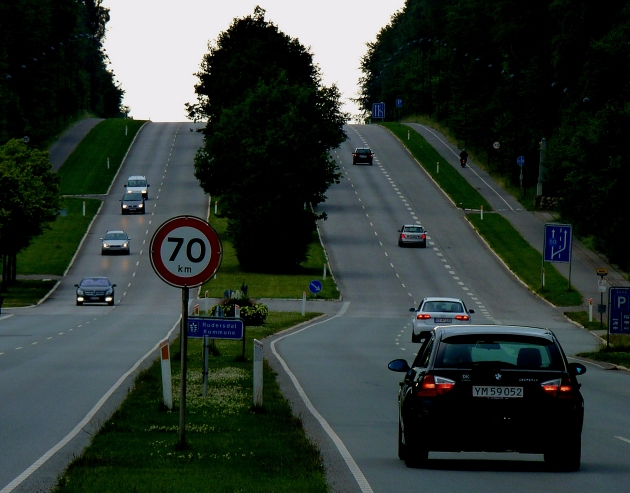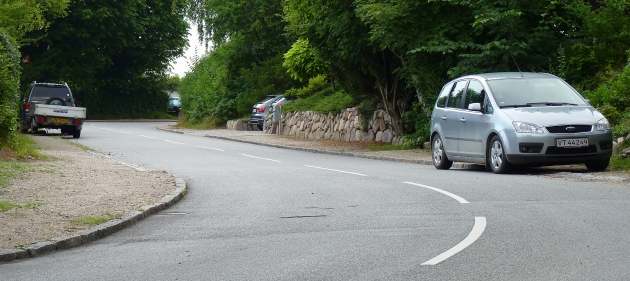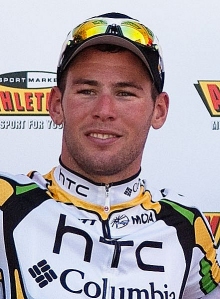
|
|
|
THE CHAMPIONSHIP COURSE: WHERE THE RACE IS WON (2:2)
Read here about the most interesting part of the world championship course, starting with the controversial Geels Bakke at Kongevejen. (Or go back to the first page of this analysis.) This tough subsection of the course actually starts where the race eventually ends: With Geels Bakke at Kongevejen. The road surface rises 4.0 percent in average over a distance of 540 meters. That "only" makes it the second hardest climb of the circuit, but because of its status as finishing stretch it is the most discussed location of the entire course. Let's shortly touch upon that discussion.
Not like in the Tour Another question that should be be raised is what roll the general hardness of the race can play. A world championship race doesn't follow the same pattern as, say, a stage in the Tour de France where the sprinters' teams let a group of opportunists fry in the summerheat only to consume them with clinical predictability a few kilometers from the finish. The battle of the nations is a ragbag of interests, and at the same time the championship field includes some one-day-race riders that all hope for noble metals. In the Tour, these riders will typically notice the headline "sprint stage" and then find their anonymous, energy-saving spot in the big bunch. That strategy is not an option at a world championship. So one will expect serious attempts to counter the prophecy that the race will end up with a sprint. All something that will increase the strenuousness of the race. See the page with map and profile of the route! To add to that, we have, as mentioned, the terrain. Is a rider like Cavendish still at full strength after being exposed to the circuit 17 times? As it is, Geels Bakke is not the only tricky place on this year's championship route. Hill upon hill The top of Geels Bakke is followed by the longest and steepest descent of the circuit, and after that the difficulty of the course continues to grow. First, there are two sharp right-turns, and then it goes upward along the fourth hardest hill, situated on Vangebovej (4.3 percent/300 meters). Not a scary climb, but it does get some extra size from the fact that it starts just after a turn that has lowered the speed of the riders. A little further down Vangebovej, you go 90 degrees to the left, entering Mothsvej. This is where you will meet the biggest and most beautiful climb of the whole course. No less! It is 480 meters long and has an average gradient of 5.5 percent. A gradient that is comparible to a typical category 2 climb in the Tour de France.
Shortly after the start of the climb, there is a bend to the left. And a stone's throw further up the hill, it goes in the opposite direction. Thus, you easily get out of your pursuers' line of sight. And on it goes on the last sloping stretch, with Søllerød Castle and its white walls and verdigris roofs lying at the top. A great view. There will probably be plenty of spectators here during the race, and under friendly weather conditions, the camera crews should be able to record some spectacular shots. This is the climax of the championships in terms of aesthetics, and, in fact, in terms of topography: The surface of the road here reaches a height of 54 meters above sea-level. That's 26½ meters more than at the bottom of the climb. We're now approaching Attemosevej. Another 90 degrees turn awaits us. And another climb. It's neither long nor steep, but again, the fact that the previous turn will slow down the riders may play a role here. See the overview of the 7 climbs of the championship route! Out in the open Now, the surroundings are changing. From a residential area classic style we suddenly get out into the open. There are fields on both sides of the road, and it is quite hilly. The third toughest climbs begins, as we are passing two small lakes. The climb amounts to a modest 2.5 percent in average, but at the same time it's relatively long: 650 meters. The road continues to rise a little, undtil we reach Ørnebakken (Eagle's Hill) and move into more urban surroundings. This is where the hardest section of the world championship route ends - to the relief of the "super sprinters" and their helpers, probably. The next eight kilometers are - as described earlier - without any major obstacles before the arrival at the home stretch of Geels Bakke. Speaking of which: One should not forget that Geels Bakke can be used as a take-off for people who want to attack. Being wide and straight as an arrow, Geels Bakke doesn't allow for a discreet escape (as opposed to e.g. the hill at Søllerød Castle). On the other hand, Geels Bakke remains the gate to six kilometers of hilly and winding asphalt that may serve as a useful tool for offensive-minded riders. Certainly, these riders should not save their eagerness for the final half of the circuit, as it will prove difficult to make a difference there. Two times Alpe d'Huez So all in all, what kind of course are we dealing with here? Is Danish race director Jesper Worre right when he describes it as "interesting and demanding" on the official website of the championships? Objectively, the route is certainly not flat - in the literal sense of the word. About 2000 vertical meters need to be climbed from start to finish. That's almost two times Alpe d'Huez.
This goes for the tough six kilometers of the route where the main part of the height meters are found. Little wind The other eight kilometers draw in the opposite direction and make the description "interesting and demanding" a little wobbly. True enough, this quite flat distance is mainly being ridden towards southwest - that is, in a direction that the wind in Denmark tends to come from. But if you have tried to ride through the circuit a few times (as the author of this article), you will have experienced that the wind isn't much in play. The surroundings are too urban for that - there's simply too many buildings and trees getting in the way. So the conditions here are great for those who want to keep the peloton together. And in addition, they can take advantage of the fact that those eight uncomplicated eight kilometers lie on the finishing section of the circuit, so on the 17th round there are good chances of pulling in the last desperate break-away riders before the mass sprint. Riders decide In conclusion: The sprinters seem to hold the strongest cards going in to the race around Søllerød at the end of September. But as mentioned: Everything is relative. And especially one thing makes it so. Namely the riders themselves. Do most of them accept the notion that it will be a sprinters' championship? Or are they prepared to challenge that claim - and seize the opportunities that the route has to offer? Maybe the riders themselves don't even know the answer yet. Maybe we will not find out what the championship route really holds until they put their wheels on it for the first time. Go back to the first part of this article. OR CONTINUE TO THE OVERVIEW OF THE 7 CLIMBS OF THE ROUTE! >> Related pages: The course: Analysis (1:2) | The course: Analysis (2:2) | The course: The 7 climbs - description and assessment | The course: The 7 climbs - Geography and topography | Things to see
|
|
||||||||||


